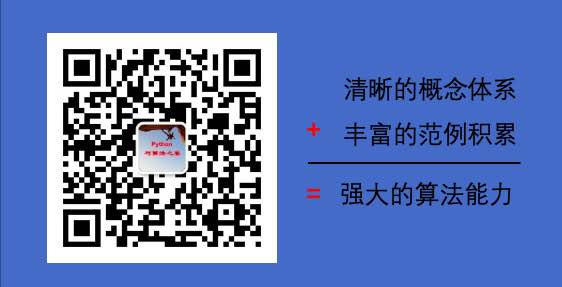4-2,张量的数学运算#
张量的操作主要包括张量的结构操作和张量的数学运算。
张量结构操作诸如:张量创建,索引切片,维度变换,合并分割。
张量数学运算主要有:标量运算,向量运算,矩阵运算。另外我们会介绍张量运算的广播机制。
本篇我们介绍张量的数学运算。
一,标量运算#
张量的数学运算符可以分为标量运算符、向量运算符、以及矩阵运算符。
加减乘除乘方,以及三角函数,指数,对数等常见函数,逻辑比较运算符等都是标量运算符。
标量运算符的特点是对张量实施逐元素运算。
有些标量运算符对常用的数学运算符进行了重载。并且支持类似numpy的广播特性。
许多标量运算符都在 tf.math模块下。
import tensorflow as tf
import numpy as np
a = tf.constant([[1.0,2],[-3,4.0]])
b = tf.constant([[5.0,6],[7.0,8.0]])
a+b #运算符重载
<tf.Tensor: shape=(2, 2), dtype=float32, numpy=
array([[ 6., 8.],
[ 4., 12.]], dtype=float32)>
a-b
<tf.Tensor: shape=(2, 2), dtype=float32, numpy=
array([[ -4., -4.],
[-10., -4.]], dtype=float32)>
a*b
<tf.Tensor: shape=(2, 2), dtype=float32, numpy=
array([[ 5., 12.],
[-21., 32.]], dtype=float32)>
a/b
<tf.Tensor: shape=(2, 2), dtype=float32, numpy=
array([[ 0.2 , 0.33333334],
[-0.42857143, 0.5 ]], dtype=float32)>
a**2
<tf.Tensor: shape=(2, 2), dtype=float32, numpy=
array([[ 1., 4.],
[ 9., 16.]], dtype=float32)>
a**(0.5)
<tf.Tensor: shape=(2, 2), dtype=float32, numpy=
array([[1. , 1.4142135],
[ nan, 2. ]], dtype=float32)>
a%3 #mod的运算符重载,等价于m = tf.math.mod(a,3)
<tf.Tensor: shape=(3,), dtype=int32, numpy=array([1, 2, 0], dtype=int32)>
a//3 #地板除法
<tf.Tensor: shape=(2, 2), dtype=float32, numpy=
array([[ 0., 0.],
[-1., 1.]], dtype=float32)>
(a>=2)
<tf.Tensor: shape=(2, 2), dtype=bool, numpy=
array([[False, True],
[False, True]])>
(a>=2)&(a<=3)
<tf.Tensor: shape=(2, 2), dtype=bool, numpy=
array([[False, True],
[False, False]])>
(a>=2)|(a<=3)
<tf.Tensor: shape=(2, 2), dtype=bool, numpy=
array([[ True, True],
[ True, True]])>
a==5 #tf.equal(a,5)
<tf.Tensor: shape=(3,), dtype=bool, numpy=array([False, False, False])>
tf.sqrt(a)
<tf.Tensor: shape=(2, 2), dtype=float32, numpy=
array([[1. , 1.4142135],
[ nan, 2. ]], dtype=float32)>
a = tf.constant([1.0,8.0])
b = tf.constant([5.0,6.0])
c = tf.constant([6.0,7.0])
tf.add_n([a,b,c])
<tf.Tensor: shape=(2,), dtype=float32, numpy=array([12., 21.], dtype=float32)>
tf.print(tf.maximum(a,b))
[5 8]
tf.print(tf.minimum(a,b))
[1 6]
x = tf.constant([2.6,-2.7])
tf.print(tf.math.round(x)) #保留整数部分,四舍五入
tf.print(tf.math.floor(x)) #保留整数部分,向下归整
tf.print(tf.math.ceil(x)) #保留整数部分,向上归整
[3 -3]
[2 -3]
[3 -2]
# 幅值裁剪
x = tf.constant([0.9,-0.8,100.0,-20.0,0.7])
y = tf.clip_by_value(x,clip_value_min=-1,clip_value_max=1)
z = tf.clip_by_norm(x,clip_norm = 3)
tf.print(y)
tf.print(z)
[0.9 -0.8 1 -1 0.7]
[0.0264732055 -0.0235317405 2.94146752 -0.588293493 0.0205902718]
二,向量运算#
向量运算符只在一个特定轴上运算,将一个向量映射到一个标量或者另外一个向量。
许多向量运算符都以reduce开头。
#向量reduce
a = tf.range(1,10)
tf.print(tf.reduce_sum(a))
tf.print(tf.reduce_mean(a))
tf.print(tf.reduce_max(a))
tf.print(tf.reduce_min(a))
tf.print(tf.reduce_prod(a))
45
5
9
1
362880
#张量指定维度进行reduce
b = tf.reshape(a,(3,3))
tf.print(tf.reduce_sum(b, axis=1, keepdims=True))
tf.print(tf.reduce_sum(b, axis=0, keepdims=True))
[[6]
[15]
[24]]
[[12 15 18]]
#bool类型的reduce
p = tf.constant([True,False,False])
q = tf.constant([False,False,True])
tf.print(tf.reduce_all(p))
tf.print(tf.reduce_any(q))
0
1
#利用tf.foldr实现tf.reduce_sum
s = tf.foldr(lambda a,b:a+b,tf.range(10))
tf.print(s)
45
#cum扫描累积
a = tf.range(1,10)
tf.print(tf.math.cumsum(a))
tf.print(tf.math.cumprod(a))
[1 3 6 ... 28 36 45]
[1 2 6 ... 5040 40320 362880]
#arg最大最小值索引
a = tf.range(1,10)
tf.print(tf.argmax(a))
tf.print(tf.argmin(a))
8
0
#tf.math.top_k可以用于对张量排序
a = tf.constant([1,3,7,5,4,8])
values,indices = tf.math.top_k(a,3,sorted=True)
tf.print(values)
tf.print(indices)
#利用tf.math.top_k可以在TensorFlow中实现KNN算法
[8 7 5]
[5 2 3]
三,矩阵运算#
矩阵必须是二维的。类似tf.constant([1,2,3])这样的不是矩阵。
矩阵运算包括:矩阵乘法,矩阵转置,矩阵逆,矩阵求迹,矩阵范数,矩阵行列式,矩阵求特征值,矩阵分解等运算。
除了一些常用的运算外,大部分和矩阵有关的运算都在tf.linalg子包中。
#矩阵乘法
a = tf.constant([[1,2],[3,4]])
b = tf.constant([[2,0],[0,2]])
a@b #等价于tf.matmul(a,b)
<tf.Tensor: shape=(2, 2), dtype=int32, numpy=
array([[2, 4],
[6, 8]], dtype=int32)>
#矩阵转置
a = tf.constant([[1,2],[3,4]])
tf.transpose(a)
<tf.Tensor: shape=(2, 2), dtype=int32, numpy=
array([[1, 3],
[2, 4]], dtype=int32)>
#矩阵逆,必须为tf.float32或tf.double类型
a = tf.constant([[1.0,2],[3,4]],dtype = tf.float32)
tf.linalg.inv(a)
<tf.Tensor: shape=(2, 2), dtype=float32, numpy=
array([[-2.0000002 , 1.0000001 ],
[ 1.5000001 , -0.50000006]], dtype=float32)>
#矩阵求trace
a = tf.constant([[1.0,2],[3,4]],dtype = tf.float32)
tf.linalg.trace(a)
<tf.Tensor: shape=(), dtype=float32, numpy=5.0>
#矩阵求范数
a = tf.constant([[1.0,2],[3,4]])
tf.linalg.norm(a)
<tf.Tensor: shape=(), dtype=float32, numpy=5.477226>
#矩阵行列式
a = tf.constant([[1.0,2],[3,4]])
tf.linalg.det(a)
<tf.Tensor: shape=(), dtype=float32, numpy=-2.0>
#矩阵特征值
a = tf.constant([[1.0,2],[-5,4]])
tf.linalg.eigvals(a)
<tf.Tensor: shape=(2,), dtype=complex64, numpy=array([2.4999995+2.7838817j, 2.5 -2.783882j ], dtype=complex64)>
#矩阵QR分解, 将一个方阵分解为一个正交矩阵q和上三角矩阵r
#QR分解实际上是对矩阵a实施Schmidt正交化得到q
a = tf.constant([[1.0,2.0],[3.0,4.0]],dtype = tf.float32)
q,r = tf.linalg.qr(a)
tf.print(q)
tf.print(r)
tf.print(q@r)
[[-0.316227794 -0.948683321]
[-0.948683321 0.316227734]]
[[-3.1622777 -4.4271884]
[0 -0.632455349]]
[[1.00000012 1.99999976]
[3 4]]
#矩阵svd分解
#svd分解可以将任意一个矩阵分解为一个正交矩阵u,一个对角阵s和一个正交矩阵v.t()的乘积
#svd常用于矩阵压缩和降维
a = tf.constant([[1.0,2.0],[3.0,4.0],[5.0,6.0]], dtype = tf.float32)
s,u,v = tf.linalg.svd(a)
tf.print(u,"\n")
tf.print(s,"\n")
tf.print(v,"\n")
tf.print(u@tf.linalg.diag(s)@tf.transpose(v))
#利用svd分解可以在TensorFlow中实现主成分分析降维
[[0.229847744 -0.88346082]
[0.524744868 -0.240782902]
[0.819642067 0.401896209]]
[9.52551842 0.51429987]
[[0.619629562 0.784894466]
[0.784894466 -0.619629562]]
[[1.00000119 2]
[3.00000095 4.00000048]
[5.00000143 6.00000095]]
四,广播机制#
TensorFlow的广播规则和numpy是一样的:
- 1、如果张量的维度不同,将维度较小的张量进行扩展,直到两个张量的维度都一样。
- 2、如果两个张量在某个维度上的长度是相同的,或者其中一个张量在该维度上的长度为1,那么我们就说这两个张量在该维度上是相容的。
- 3、如果两个张量在所有维度上都是相容的,它们就能使用广播。
- 4、广播之后,每个维度的长度将取两个张量在该维度长度的较大值。
- 5、在任何一个维度上,如果一个张量的长度为1,另一个张量长度大于1,那么在该维度上,就好像是对第一个张量进行了复制。
tf.broadcast_to 以显式的方式按照广播机制扩展张量的维度。
a = tf.constant([1,2,3])
b = tf.constant([[0,0,0],[1,1,1],[2,2,2]])
b + a #等价于 b + tf.broadcast_to(a,b.shape)
<tf.Tensor: shape=(3, 3), dtype=int32, numpy=
array([[1, 2, 3],
[2, 3, 4],
[3, 4, 5]], dtype=int32)>
tf.broadcast_to(a,b.shape)
<tf.Tensor: shape=(3, 3), dtype=int32, numpy=
array([[1, 2, 3],
[1, 2, 3],
[1, 2, 3]], dtype=int32)>
#计算广播后计算结果的形状,静态形状,TensorShape类型参数
tf.broadcast_static_shape(a.shape,b.shape)
TensorShape([3, 3])
#计算广播后计算结果的形状,动态形状,Tensor类型参数
c = tf.constant([1,2,3])
d = tf.constant([[1],[2],[3]])
tf.broadcast_dynamic_shape(tf.shape(c),tf.shape(d))
<tf.Tensor: shape=(2,), dtype=int32, numpy=array([3, 3], dtype=int32)>
#广播效果
c+d #等价于 tf.broadcast_to(c,[3,3]) + tf.broadcast_to(d,[3,3])
<tf.Tensor: shape=(3, 3), dtype=int32, numpy=
array([[2, 3, 4],
[3, 4, 5],
[4, 5, 6]], dtype=int32)>
如果对本书内容理解上有需要进一步和作者交流的地方,欢迎在公众号"Python与算法之美"下留言。作者时间和精力有限,会酌情予以回复。
也可以在公众号后台回复关键字:加群,加入读者交流群和大家讨论。
